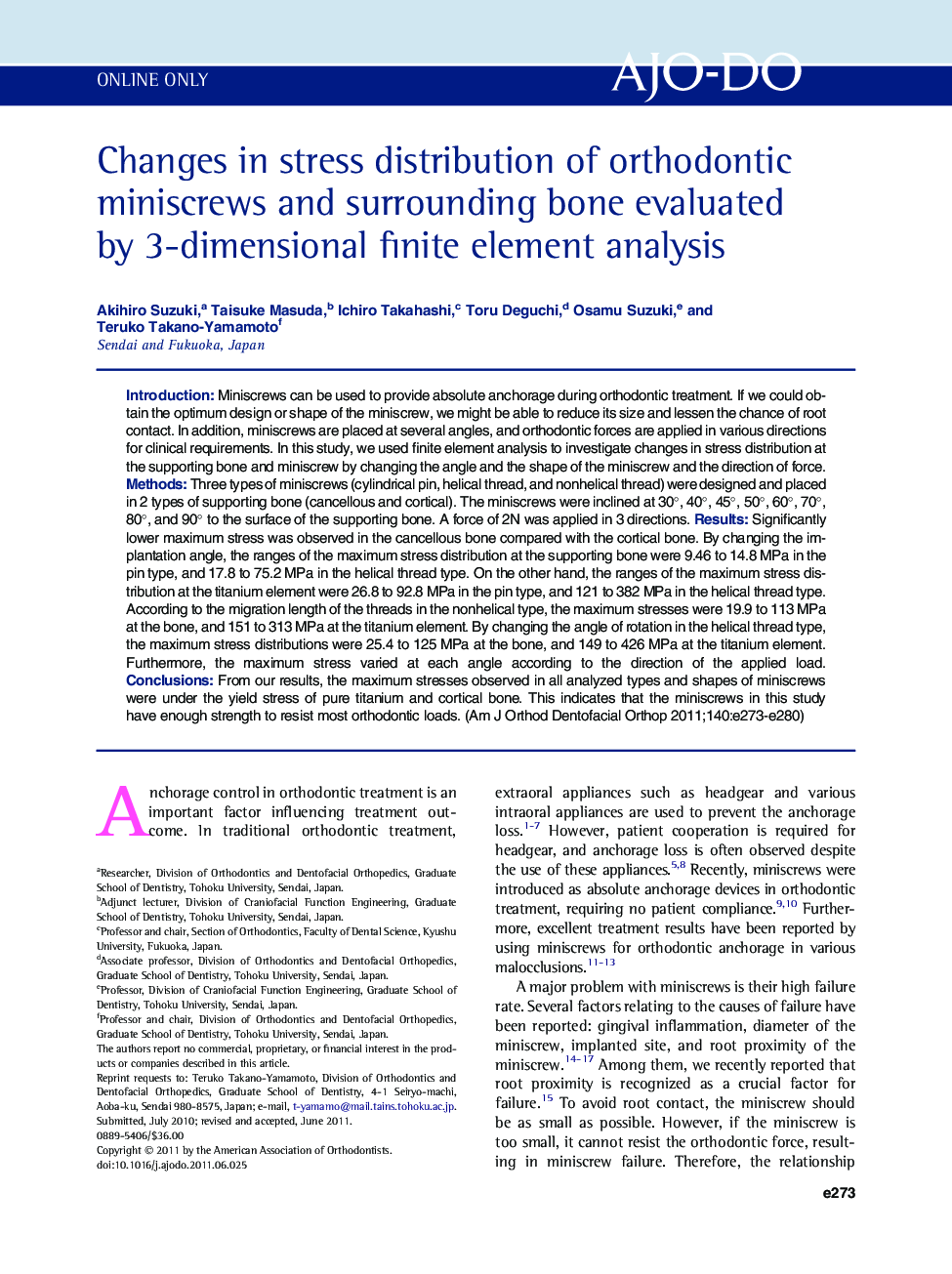| کد مقاله | کد نشریه | سال انتشار | مقاله انگلیسی | نسخه تمام متن |
|---|---|---|---|---|
| 3117161 | 1582734 | 2011 | 8 صفحه PDF | دانلود رایگان |

IntroductionMiniscrews can be used to provide absolute anchorage during orthodontic treatment. If we could obtain the optimum design or shape of the miniscrew, we might be able to reduce its size and lessen the chance of root contact. In addition, miniscrews are placed at several angles, and orthodontic forces are applied in various directions for clinical requirements. In this study, we used finite element analysis to investigate changes in stress distribution at the supporting bone and miniscrew by changing the angle and the shape of the miniscrew and the direction of force.MethodsThree types of miniscrews (cylindrical pin, helical thread, and nonhelical thread) were designed and placed in 2 types of supporting bone (cancellous and cortical). The miniscrews were inclined at 30°, 40°, 45°, 50°, 60°, 70°, 80°, and 90° to the surface of the supporting bone. A force of 2N was applied in 3 directions.ResultsSignificantly lower maximum stress was observed in the cancellous bone compared with the cortical bone. By changing the implantation angle, the ranges of the maximum stress distribution at the supporting bone were 9.46 to 14.8 MPa in the pin type, and 17.8 to 75.2 MPa in the helical thread type. On the other hand, the ranges of the maximum stress distribution at the titanium element were 26.8 to 92.8 MPa in the pin type, and 121 to 382 MPa in the helical thread type. According to the migration length of the threads in the nonhelical type, the maximum stresses were 19.9 to 113 MPa at the bone, and 151 to 313 MPa at the titanium element. By changing the angle of rotation in the helical thread type, the maximum stress distributions were 25.4 to 125 MPa at the bone, and 149 to 426 MPa at the titanium element. Furthermore, the maximum stress varied at each angle according to the direction of the applied load.ConclusionsFrom our results, the maximum stresses observed in all analyzed types and shapes of miniscrews were under the yield stress of pure titanium and cortical bone. This indicates that the miniscrews in this study have enough strength to resist most orthodontic loads.
Journal: American Journal of Orthodontics and Dentofacial Orthopedics - Volume 140, Issue 6, December 2011, Pages e273–e280